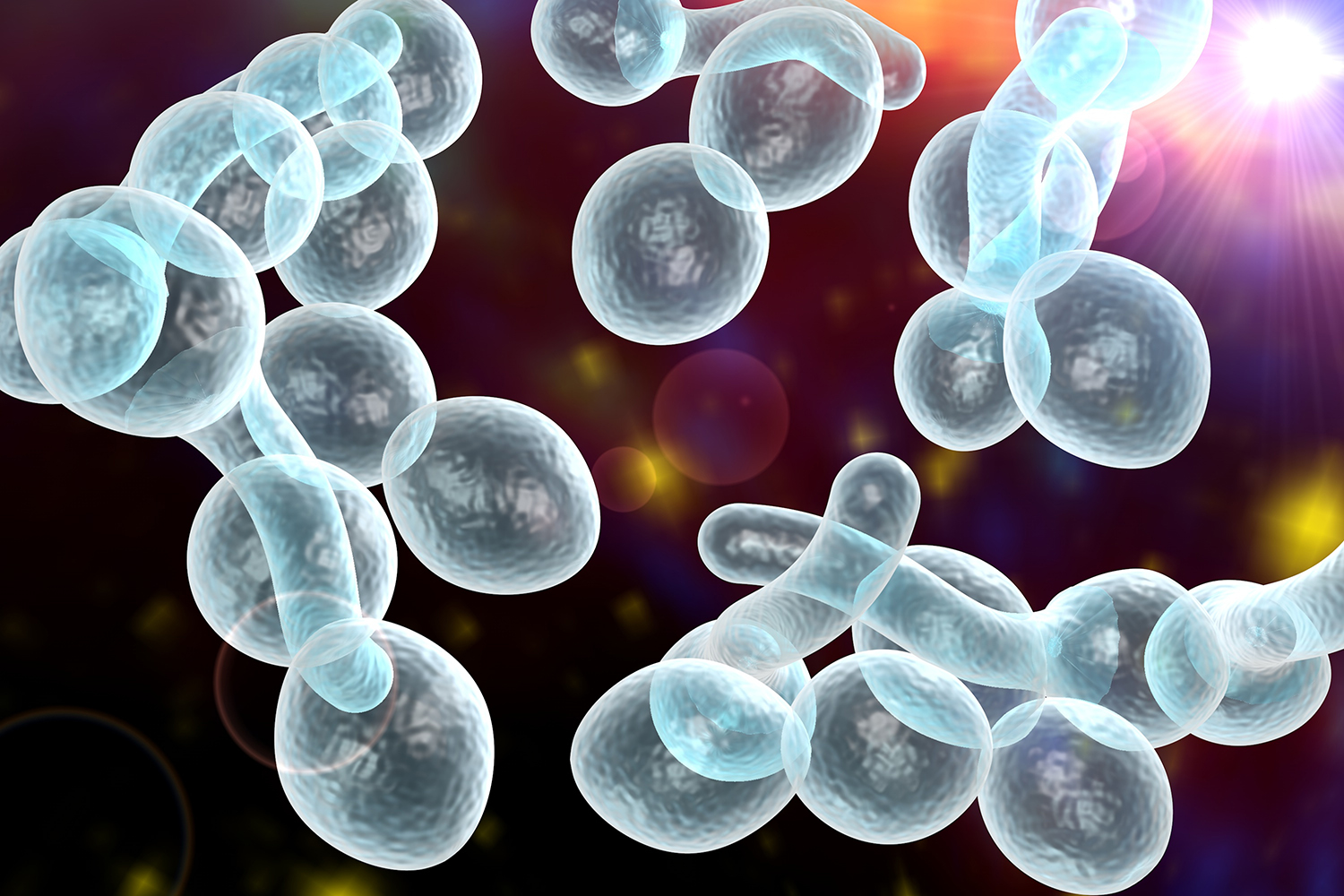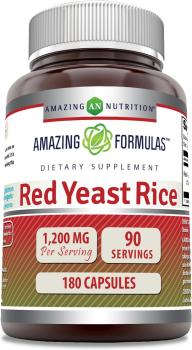Candida Yeast, Cravings, and Autoimmune Disease
What's the Connection Between the Three?

Photo 78992564 © Kateryna Kon | Dreamstime.com
Have cravings for sugary snacks gotten the better of you and left you with aching joints and itching skin? You’re far from alone. Cortisol levels soar when we are under stress, which causes us to crave sugary and fatty foods. If indulging in those cravings leaves you feeling like your autoimmune issues are in a flare, then there may be a Candida connection to your condition.
Autoimmune disease is now a daily struggle for 1 out of 5 Americans. Fatigue, digestive issues, joint pain, and skin issues are among the most common autoimmune symptoms – and are also common symptoms of Candida yeast overgrowth. Candida is not only a root cause behind autoimmunity, but the immunosuppressive drugs used to treat autoimmune diseases can cause Candida overgrowth, even if you didn’t have it before.
Candida overgrowth has reached epidemic proportions, with 1 in 3 adults – primarily women – suffering from the symptoms. Candida yeast is in the air, in your throat, and in your digestive system, coexisting peacefully with the myriad of organisms that make up your gut microbiome. But eat a carb-rich diet heavy in sugars, take a course of antibiotics, upset your hormone balance, or find yourself under chronic stress, and the conditions are ripe for Candida to overgrow and wreak havoc.
Why Do We Have Candida?
Normally, these tiny, oval-shaped cells live along your mucus membranes and are kept in check by the trillions of healthy bacteria that make up your microbiome. But, yeast of all types feed on sugar, and with the average American eating more than 150 pounds of sugar in a year, Candida is basically getting an all-you-can-eat buffet and growing out of control. Add to this the number of toxins we come in contact with – including antibiotics that kill off the good bacteria along with the bad – and Candida can pretty easily run amok inside your body.
Yeasts like Candida do serve a purpose in your body. When digestion is poor and stomach acid is low, the food you eat sits without being digested properly by stomach acid, bile, and digestive enzymes, and essentially starts to rot. Yeast comes in and digests the sugars and gives off alcohol as its byproduct, turning this rotting process into fermentation, much like the process used to turn hops and barley into beer. And similar to bread rising, your belly bloats from the process. You also get brain fog from the alcohol production, which can keep you from seeing the warning signs that there’s a problem.
Once the food you’ve eaten is fermented, the nutrients are broken down for easier absorption. This process isn’t ideal – it’s a survival mechanism and a breeding ground for inflammation and disease. This is due in part to the already impaired digestive system being flooded with toxins, pathogens, and products of fermentation, and also to Candida changing into its more invasive form.
More than 20 different strains of Candida have been identified in our bodies, with Candida albicans being the most common. Even though it’s only a single-celled organism, it has evolved to protect itself from being destroyed by taking on several different forms. It’s important to note that researchers typically only look at the single-celled form they isolate from the mucus membranes, and it is this form that’s used when medications and protocols are developed to fight it. But this is not the form linked to autoimmunity.
The Candida-Autoimmune Connection
When Candida turns pathogenic, it forms long chains called hyphae that bore through the walls of your intestines and travel to invade other tissues. In the meantime, the holes it leaves behind allow toxins, whole undigested proteins, and other pathogens to flood out through the leaking intestinal barrier as well. Now, not only has Candida transitioned from a digestive problem into a whole body problem, but it’s brought along toxins, allergens, and other foreign invaders along for the ride.
When this happens, it triggers an inflammatory response from your immune system as a protective mechanism, to try to fight off this onslaught. But, these root-like hyphae also drill into macrophages, the immune cells designed to kill Candida, resulting in an inability for them to mount a defense against it. They also use your own mucus membrane against you and burrow in together to form a protective shield around themselves known as a biofilm. This protective biofilm allows them to create their own living conditions to thrive in, pH adjusted and with plenty of food.
Even though your body can’t penetrate through this fortress in its current state, it still senses the problem and sends out wave after wave of inflammation, which stresses and eventually weakens your immune system. Confusion sets in with the exhaustion, and soon your body is attacking its own tissues trying to get to these foreign invaders. This is the essence of autoimmunity.
The Role Digestion Plays in Autoimmunity
Even if Candida overgrowth isn’t a root cause of your autoimmune issues, sooner or later it’s likely to be a contributing factor. Not only do the immunosuppressive drugs often prescribed allow Candida to get a foothold, but the autoimmunity itself is a challenge to your digestion.
Good digestion begins in the mouth, where thorough chewing mixes with saliva. But many autoimmune disorders cause underproduction of saliva, and when saliva levels are low, they trigger underproduction of stomach acid. Low stomach acid impairs nutrient absorption and the breakdown of food, but also signals a lower production of digestive enzymes. This means bile output also decreases, and autoimmune disorders are associated with as much as a 75 percent reduction in bile production.
Low bile production affects not only your digestion, but your thyroid, and your sex hormone balance, as I explain in my book, Radical Metabolism. Combined with the immunosuppression that allows Candida to overgrow, reduced nutrient absorption with subsequent deficiencies, and the wave after wave of inflammation that is triggered, it’s easy to see how autoimmunity and Candida overgrowth feed off of each other. Fortunately, there’s plenty you can do to stem the tide and starve the Candida out.
Clear Out the Candida
Once Candida finds safety in numbers, and is wrapped in its protective bubble of biofilm, it hides from your immune system and becomes much more resistant to treatment. And the longer Candida is allowed to grow, the stronger the biofilm gets and the more it can resist treatment. A large, well-established colony forms a strong biofilm that seems like an impenetrable fortress, which is why you may not have seen improvement in the anti-Candida strategies you’ve tried.
This is why it’s important to know your enemy. We know Candida feeds on sugar to grow and multiply, but with one-third of the biofilm itself being made of glucose and the rest being complex polysaccharides (sugars), sugar is also what it needs to keep protecting itself from being eradicated. It’s not as simple as cutting off its sugar supply, because your body needs glucose for your blood sugar. It takes a coordinated five-step approach to beat the biofilm and cut down the Candida population.
-
Cut the Carbs
All carbohydrates are broken down into the sugars that Candida feeds on. It’s not enough to eliminate all the processed white sugar, honey, maple syrup, agave, corn syrup, and other sources of sugar, but you really need to clean house and drastically cut the carbs from your diet. This includes alcoholic beverages, sodas, juices, fruit, and even whole grains. Stick with vegetables for your fiber and carbs until Candida is under control. A daily greens powder is an excellent source of green vegetables that also supports cell detox.
-
Be a Bad Host
Candida enjoys a more acidic pH and plenty of sugar. Once the sugar supply is drastically cut down, the next thing is to tackle the pH. At least for a little while, you’ll need to eliminate fermented foods and mushrooms because these set up the conditions that fungus likes to grow in.
-
Break Down Biofilms with Enzymes
You may already be familiar with anti-inflammatory proteolytic enzymes to support joint health and fight overall inflammation, but these same enzymes also help break down the bonds that hold biofilms together, with serrapeptase being the most popular. In addition, digestive enzymes work together with the proteases to help digest the sugars in the biofilm and weaken it. Be sure you increase your intake of filtered water while taking enzymes, because breaking down the biofilm will release the toxins being stored inside, and you’ll want to dilute those and help flush them out with plenty of fluids.
-
Clean House with Antifungal Supplements
Now that you’ve broken down Candida’s defenses, it’s wide open for attack, both from your immune system and from antifungals. My go-to is Y-C Cleanse. This powerful homeopathic liquid contains the perfect balance of antifungals and immune boosters, to keep you feeling strong while your body cleans up the Candida colonies.
-
Refortify with Probiotics
Bring your microbiome back into balance by increasing your probiotic populations. Take a good quality probiotic and prebiotic to “seed and feed” a new healthy probiotic population to crowd out Candida and support optimal immune function.
Ann Louise Gittleman, Ph.D., C.N.S.
Ann Louise Gittleman, PhD, is a New York Times award-winning author of 30 books on detox, health, and healing, including the international bestselling Fat Flush Plan and Zapped! Visit her blog and join her online Fat Flush Community.
Don't Miss a Thing!
Get the latest articles, recipes, and more, when you sign up for the tasteforlife.com newsletter.

